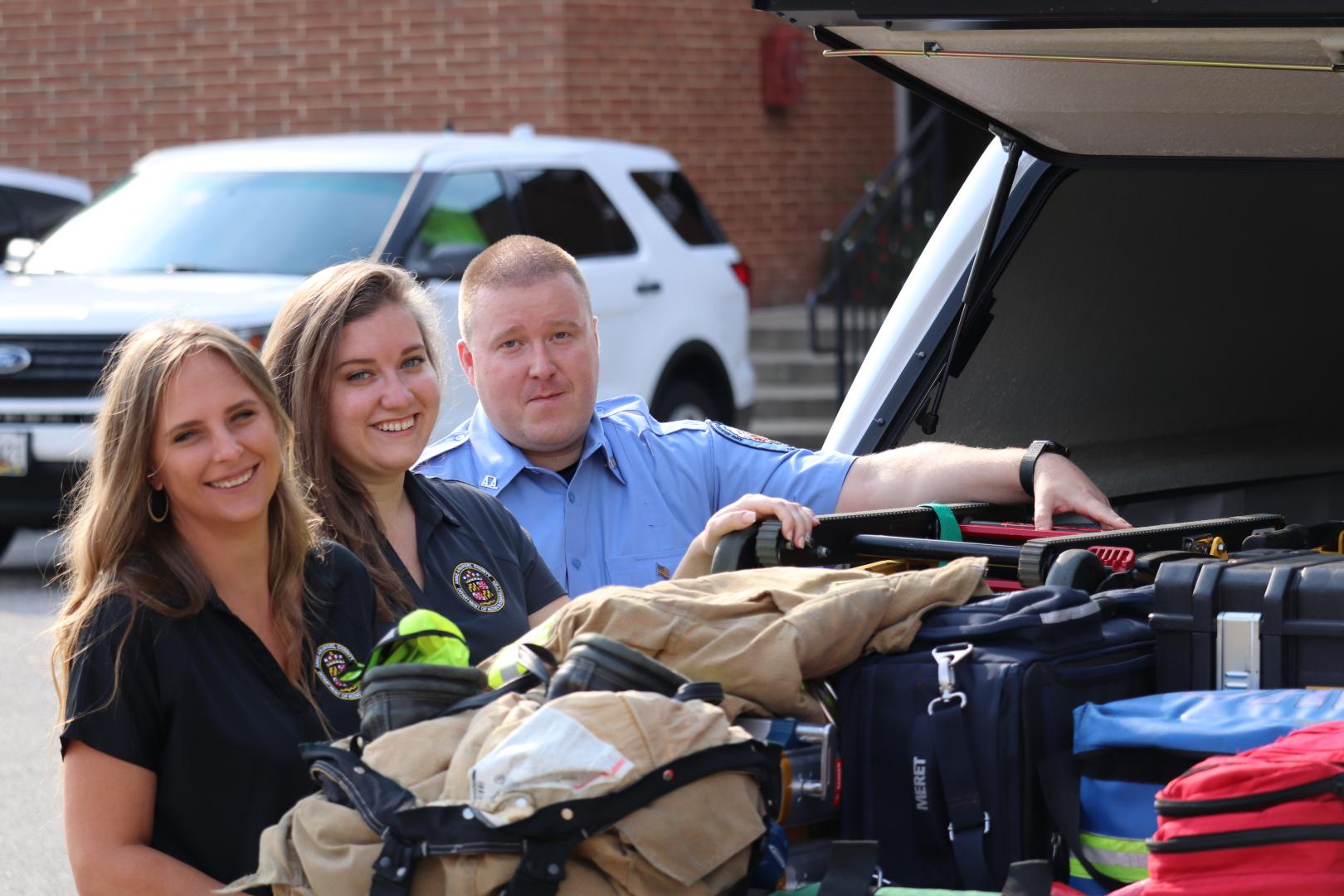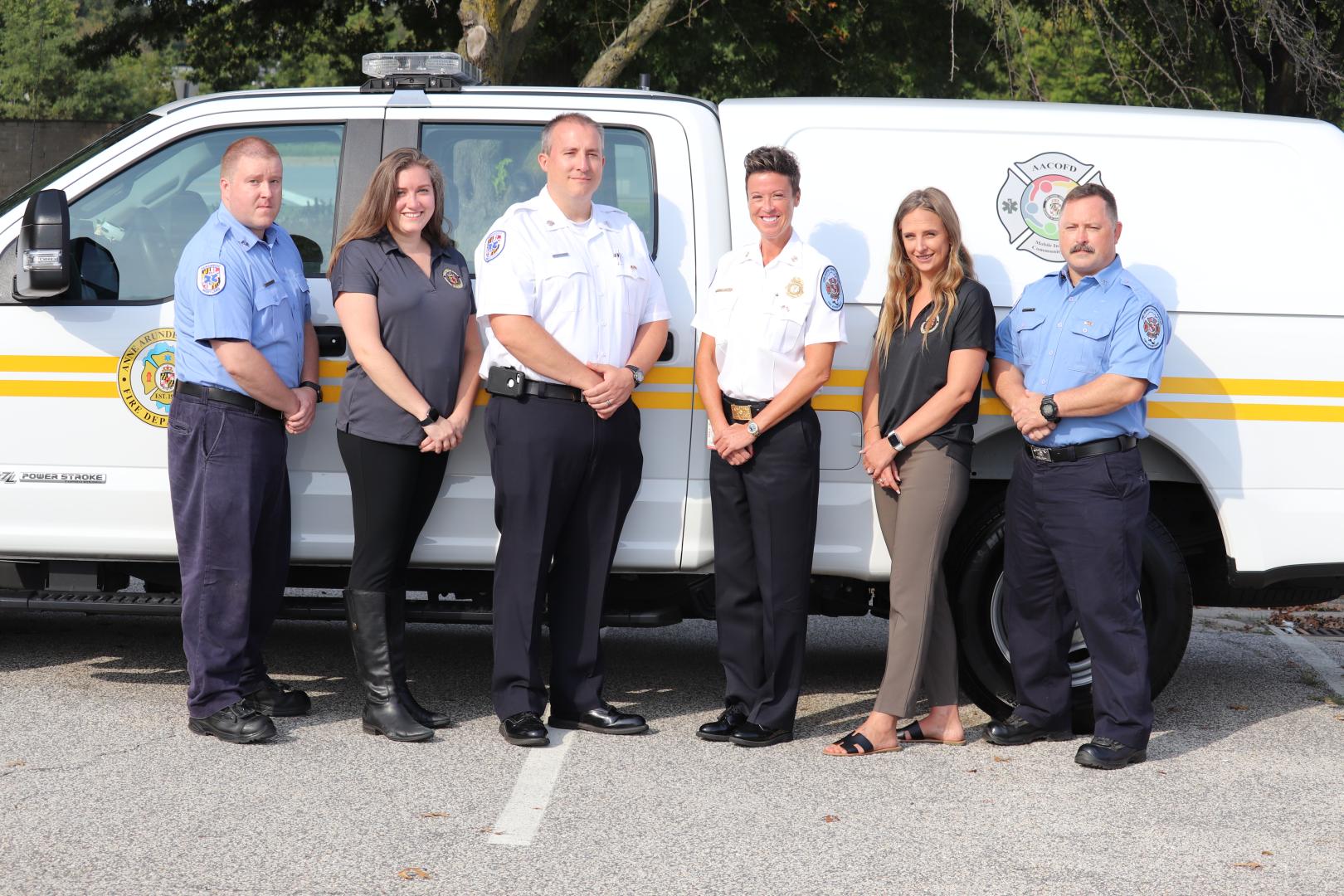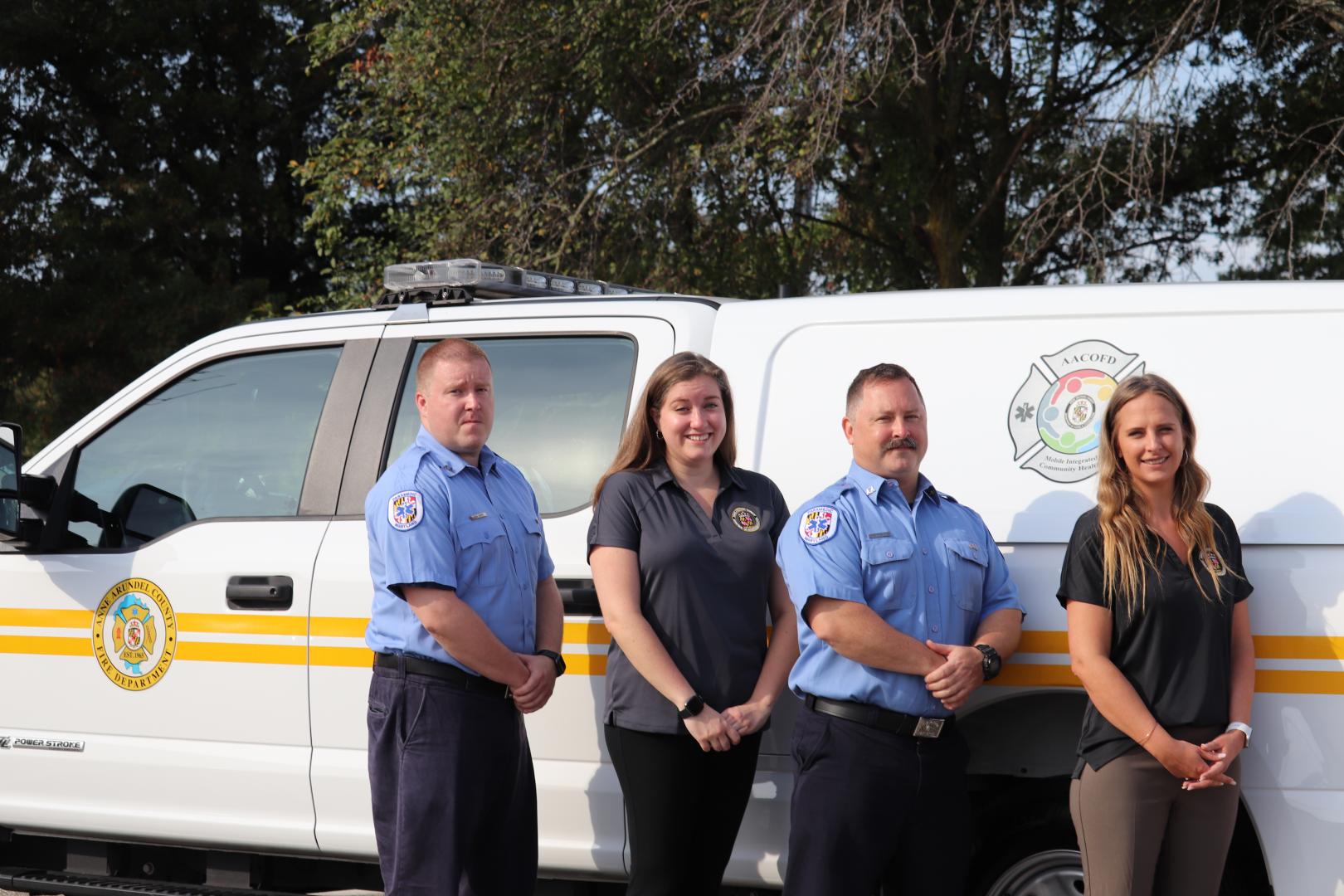On Tuesday, November 2, 2021, Anne Arundel County Executive Steuart Pittman, the Department of Aging and Disabilities (DoAD) and the Anne Arundel County Fire Department (AACoFD) joined executives from University of Maryland Baltimore Washington Medical Center (BWMC) and Luminis Health Anne Arundel Medical Center (AAMC) to announce the implementation of an exciting public-private partnership designed to dramatically reduce emergency medical 911 call and also improve the health and well being of clients served.
The Mobile Integrated Community Health (MICH) Program partnership was fully implemented in February, 2020 to address situations when a 911 medical emergency response and transport to a local emergency department may not best meet the needs of the client. The program identifies individuals who frequently utilize 911 for non-life threatening medical reasons, and links them to community resources and medical/social programs that more appropriately meet their needs.
The program dramatically decreased 911 calls by program participants - the 203 clients served, by 70% in the first three months following MICH implementation.
Many of those served did not have established relationships with community health services, and utilized 911 and the emergency departments as their primary health care. Participants were voluntarily referred to the program through frequent 911/EMS interaction, high hospital utilization, or from outside sources.
Once a client is identified, the MICH team schedules an initial visit to evaluate the living environment and client health. The MICH team consists of a fire department paramedic, a registered nurse (RN), and a clinical social worker from the Department of Aging and Disabilities. Once a comprehensive evaluation is completed the team identifies the needs and potential resources to improve the client’s overall health requirements and living conditions. This results in reducing non-life threatening responses from EMS and on local hospital emergency units.



